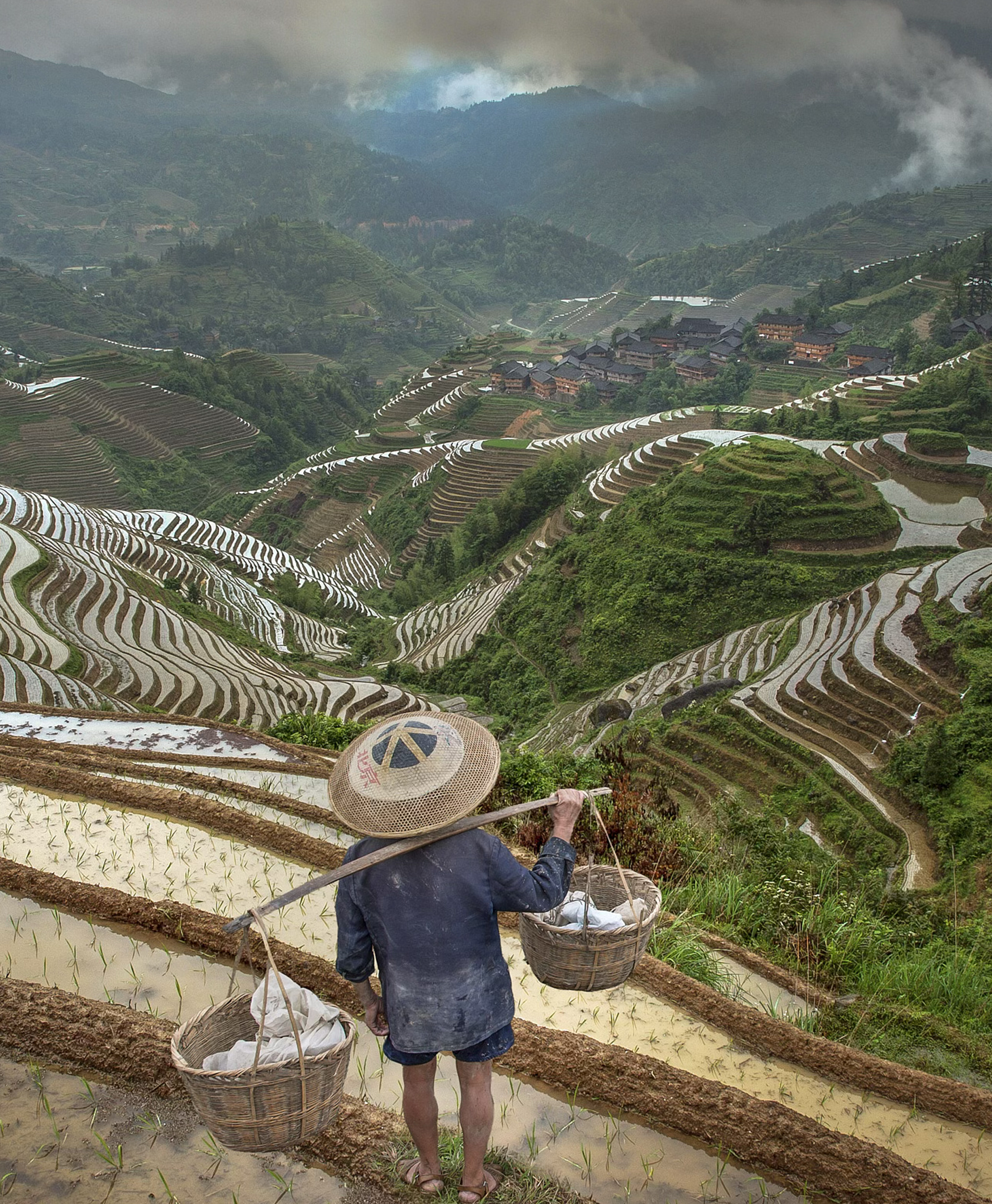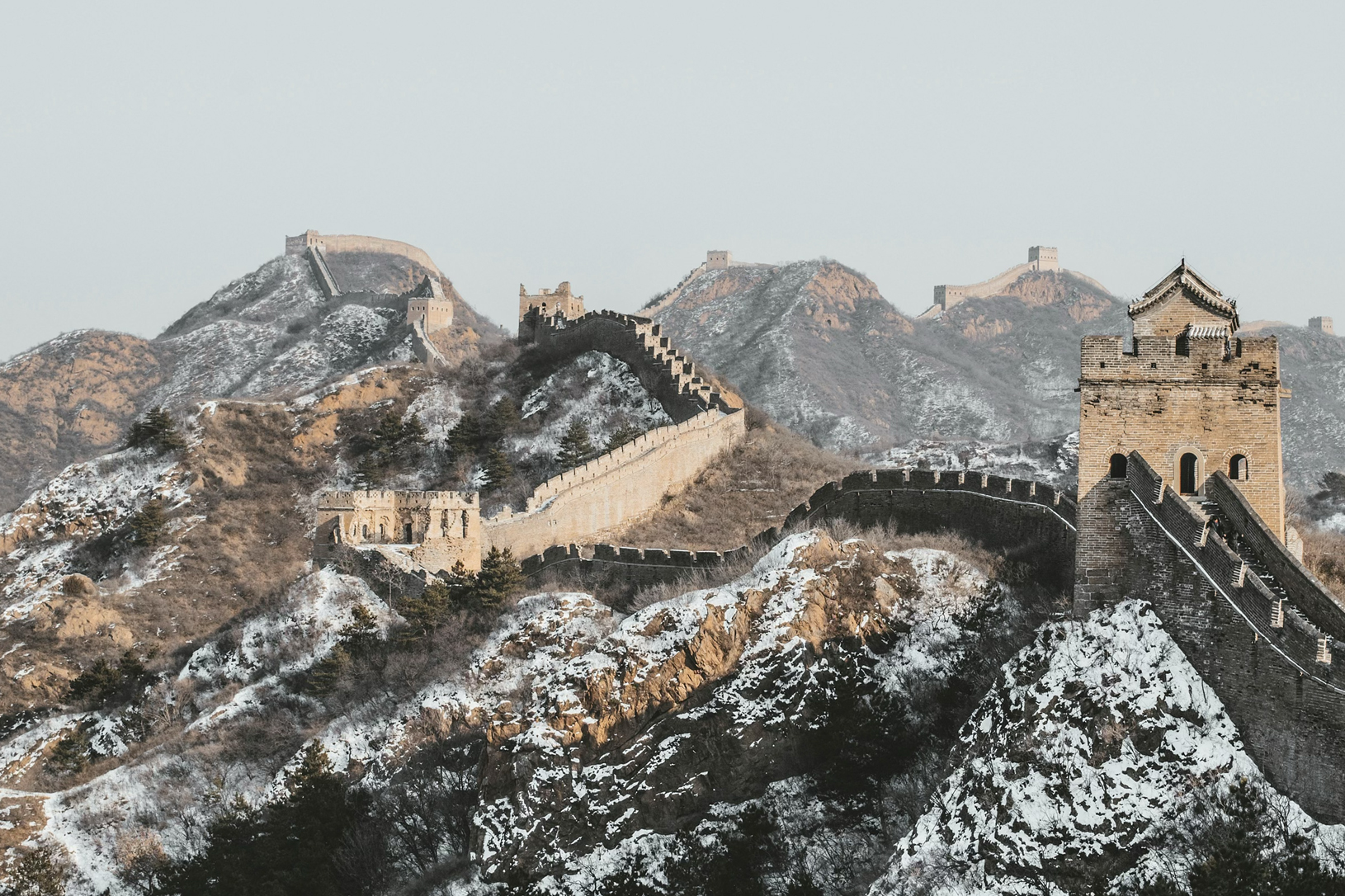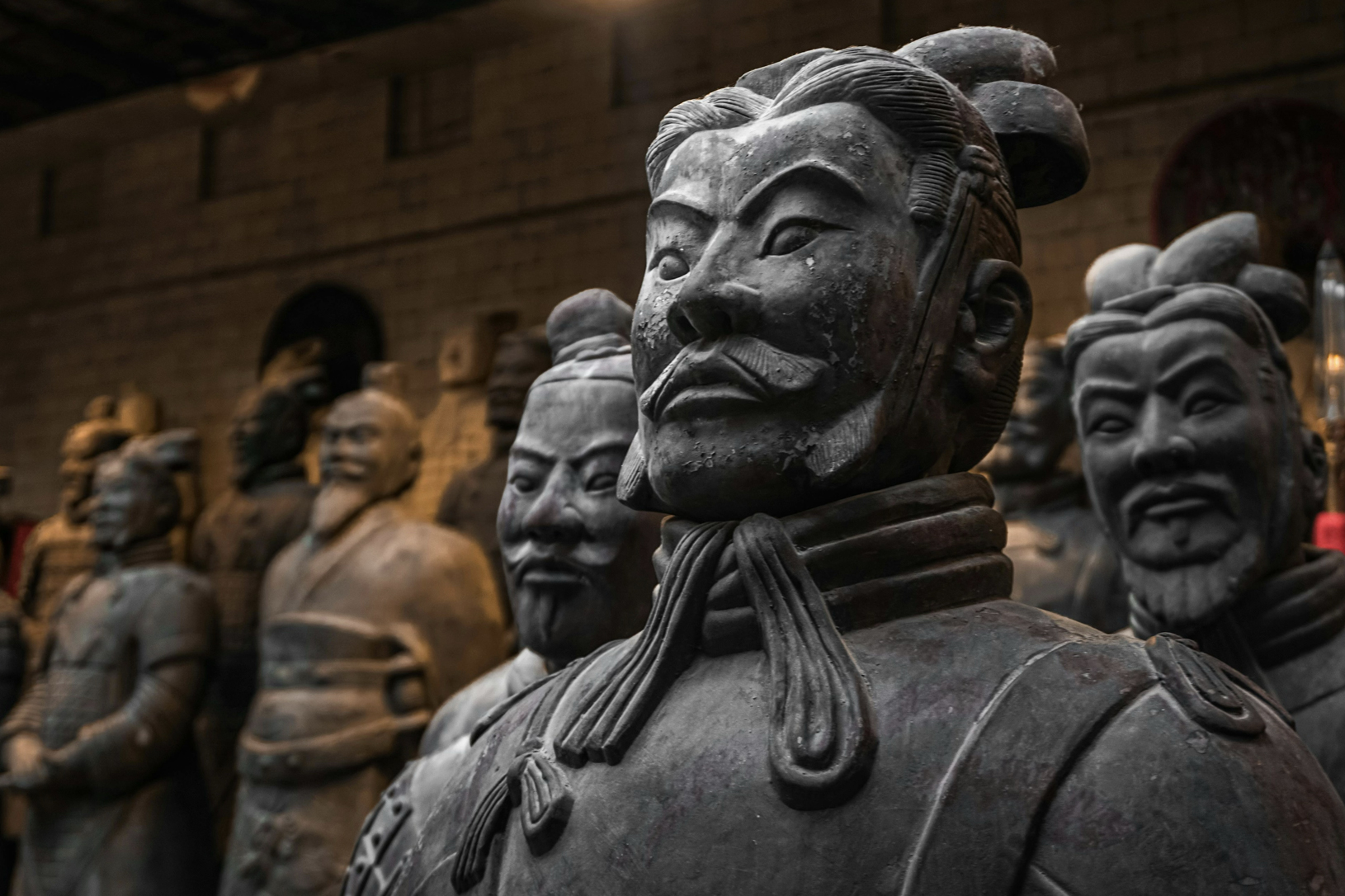Our journey begins with a steady ascent into the mountains north of Guilin, where the landscapes gradually shift from river-lined lowlands to high, folded hills sculpted by centuries of human touch. As we approach the famed Longji Rice Terraces, the scenery opens into sweeping amphitheatres of carved earth, each curve following the natural line of the mountains. Known poetically as the “dragon’s backbone,” these terraces represent more than six hundred years of patient labour. Generations of Zhuang and Yao farmers shaped them layer by layer, creating a living monument to resilience, adaptation and community.
Walking along narrow stone and earth paths between the tiers, we witness the terraces as they change mood with the light. In some sections the paddies mirror the sky in perfect stillness; in others, golden rice sways softly in the mountain breeze. Water flows gently through hand-built channels, linking one field to the next in a rhythm that feels both ancient and enduring. Villagers tend to their land with deliberate, unhurried movements, offering quiet scenes that reflect a way of life deeply connected to the seasons.
By late morning, the trail leads us toward Dazhai, a Red Yao village known for its dramatic setting and rich cultural heritage. Here the mountains rise more steeply, the terraces climb higher, and the sense of remoteness becomes more tangible. The Red Yao are renowned throughout the region for their remarkable hair traditions. Many women grow their hair to lengths exceeding a metre, nurturing it with fermented rice water and styling it in elaborate knots and loops that signify different chapters of their lives.
In a private encounter arranged especially for us, we are welcomed into a traditional wooden home, where the scent of timber and the warmth of the hearth create an inviting atmosphere. Hosts pour small cups of homemade rice wine and share stories that illuminate their customs, from ancestral practices to everyday rituals. Their words, passed down across generations, offer insight into how community, belief and landscape intertwine in the mountains.
A home-cooked meal awaits, prepared with ingredients sourced directly from the terraces and forests around the village. Dishes might include bamboo-steamed vegetables, river fish, wild herbs, or glutinous rice harvested from nearby fields. As we share this meal, the women may offer folk songs that form an integral part of their oral heritage — melodies used in festivals, courtship, gatherings and storytelling. There may also be the chance to see examples of their intricate embroidery, where geometric motifs carry meanings tied to identity, protection and prosperity. Nothing here is theatrical or contrived: it is a sincere exchange grounded in long-standing tradition and everyday pride.
As the afternoon light softens, we begin our descent through the mountain paths. The terraces glow in warm tones, each curve catching the last glimmers of the day. By early evening, we return to your hotel with a deeper appreciation for the landscapes shaped by hand and the cultural traditions sustained with quiet dignity.








